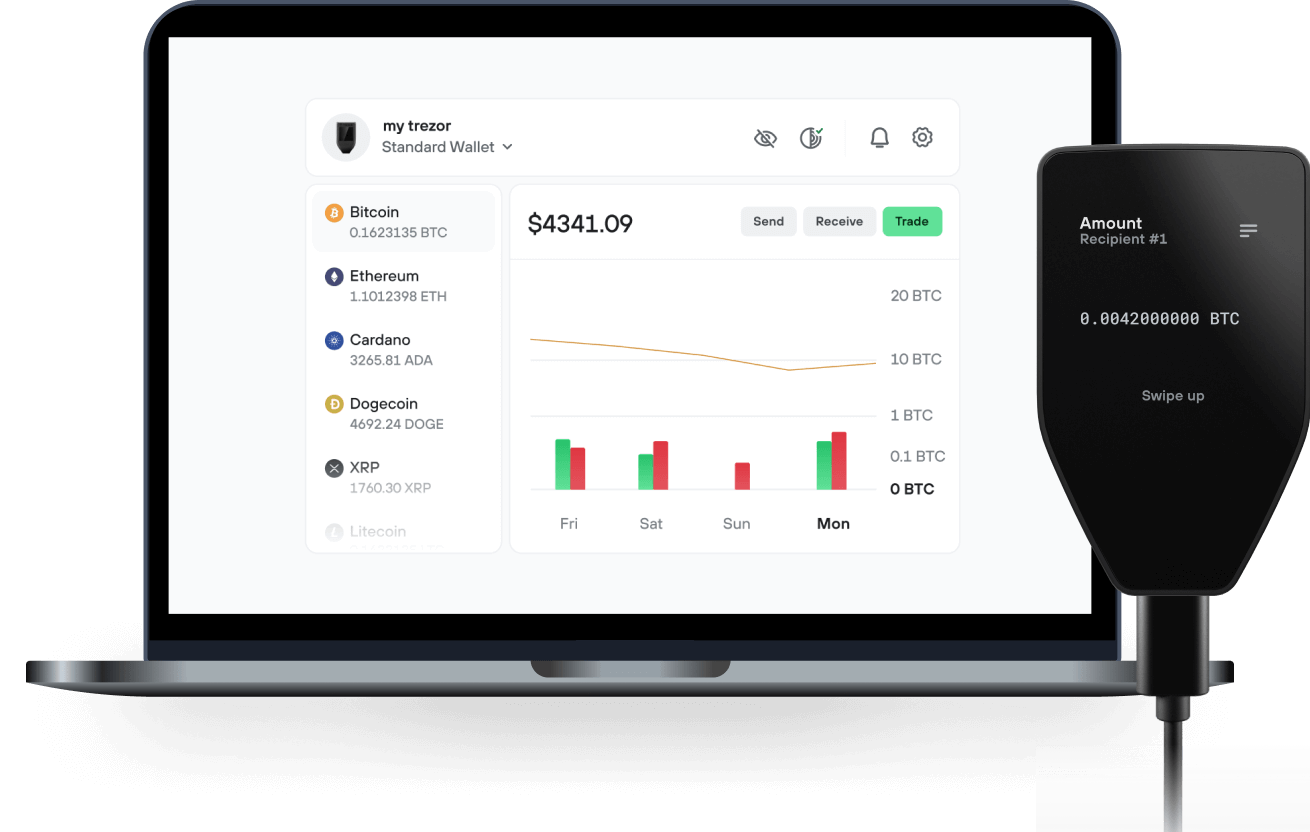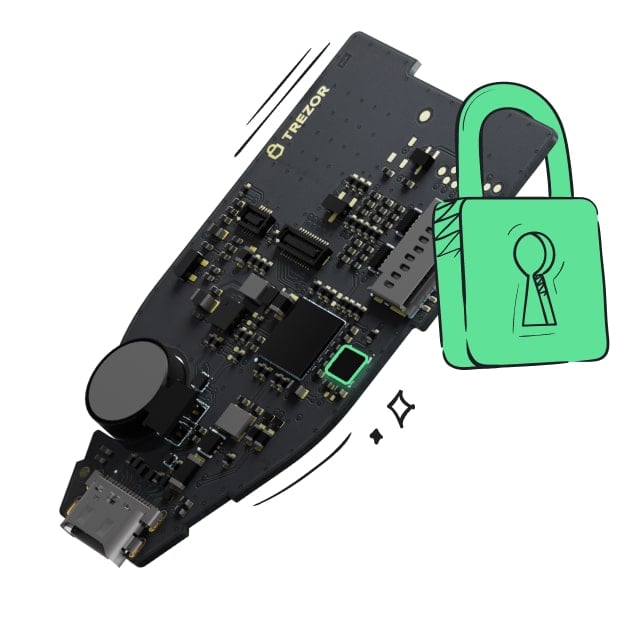Portefeuille sûr et sécurisé Stellar
Prenez le contrôle de vos Stellar actifs en toute confiance dans l’écosystème Trezor.
- Sécurisé par votre portefeuille matériel
- Utiliser avec des hot wallets compatibles
- Adopté par plus de 2 millions de clients

Achetez, vendez et gérez vos Stellar avec l'application Trezor Suite

Envoyer et recevoir

Achetez, vendez et échangez
Portefeuilles matériels Trezor qui supportent Stellar
Synchronisez votre Trezor avec des applications de portefeuille
Gérez vos Stellar avec votre portefeuille matériel Trezor synchronisé avec plusieurs applications de portefeuilles.
Trezor Suite
Exodus
Stellar Account Viewer
- StellarTerm
Stellar Réseau supporté
- Stellar
Pourquoi un portefeuille matériel ?
Allez hors ligne avec Trezor
- Vous possédez 100% de vos crypto
- Votre portefeuille est 100% sécurisé hors ligne
- Vos données sont 100 % anonymes
- Vos cryptos ne dépendent d’aucune entreprise
Échanges en ligne
- Si un échange échoue, vous perdez vos crypto
- Les échanges sont des cibles pour les pirates
- Vos données personnelles peuvent être exposées
- Vous ne possédez pas réellement vos crypto
Comment utiliser XLM sur Trezor
Connectez votre Trezor
Installez l'application Trezor Suite

Transférez votre XLM

Profitez pleinement de votre XLM
Trezor garde vos XLM en sécurité
 Protégé par Élément Sécurisé
Protégé par Élément SécuriséLa meilleure défense contre les menaces en ligne et hors ligne
 Vos jetons, votre contrôle
Vos jetons, votre contrôleContrôle absolu de chaque transaction avec confirmation sur l'appareil
 La sécurité commence par le code ouvert
La sécurité commence par le code ouvertLe design de portefeuille transparent rend votre Trezor meilleur et plus sûr
 Sauvegarde de portefeuille claire et simple
Sauvegarde de portefeuille claire et simpleRécupérez l’accès à vos actifs digitaux avec un nouveau standard de sauvegarde
 Confiance depuis le premier jour
Confiance depuis le premier jourLes sceaux de sécurité sur l’emballage et l’appareil protègent l’intégrité de votre Trezor
The Stellar network is an open source, distributed, and community owned network used to facilitate cross-asset transfers of value. Stellar aims to help facilitate cross-asset transfer of value at a fraction of a penny while aiming to be an open financial system that gives people of all income levels access to low-cost financial services. Stellar can handle exchanges between fiat-based currencies and between cryptocurrencies. Stellar.org, the organization that supports Stellar, is centralized like XRP and meant to handle cross platform transactions and micro transactions like XRP. However, unlike Ripple, Stellar.org is non-profit and their platform itself is open source and decentralized. Stellar was founded by Jed McCaleb in 2014. Jed McCaleb is also the founder of Mt. Gox and co-founder of Ripple, launched the network system Stellar with former lawyer Joyce Kim. Stellar is also a payment technology that aims to connect financial institutions and drastically reduce the cost and time required for cross-border transfers. In fact, both payment networks used the same protocol initially.
Distributed Exchange Through the use of its intermediary currency Lumens (XLM), a user can send any currency that they own to anyone else in a different currency. For instance, if Joe wanted to send USD to Mary using her EUR, an offer is submitted to the distributed exchange selling USD for EUR. This submitted offer forms is known as an order book. The network will use the order book to find the best exchange rate for the transaction in-order to minimize the fee paid by a user. This multi-currency transaction is possible because of "Anchors". Anchors are trusted entities that hold people’s deposits and can issue credit. In essence, Anchors serves as the bridge between different currencies and the Stellar network. Lumens (XLM) Lumens are the native asset (digital currency) that exist on the Stellar network that helps to facilitate multi-currency transactions and prevent spams. For multi-currency transactions, XLM is the digital intermediary that allows for such a transaction to occur at a low cost.
In order to prevent DoS attacks (aka spams) that would inevitably occur on the Stellar network, a small fee of 0.00001 XLM is associated with every transaction that occurs on the network. This fee is small enough so it does not significantly affect the cost of transaction, but large enough so it dissuades bad actors from spamming the network. Prior to Protocol 12, Stellar had a built-in inflation mechanism conceived to allow account holders to collectively direct inflation-generated lumens toward projects built on Stellar. As the network evolved and grew, it became increasingly clear that inflation wasn’t working as intended — account holders either didn’t set their inflation destination or joined inflation pools to claim the inflation themselves, and the operational costs associated with inflation payments continued to rise — and so a protocol change to disable inflation was proposed, implemented, voted on by validators, and ultimately adopted as part of a network upgrade. The inflation operation is now deprecated. https://developers.stellar.org/docs/glossary/inflation/